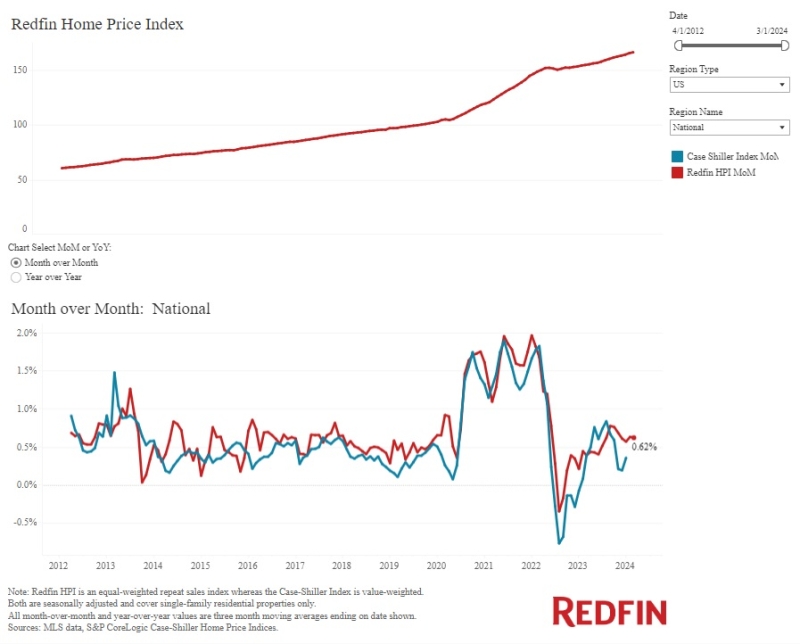Advertisement
Trend Spotter: Is this time different?

Once upon a time, the housing market and economy at large was full of euphoria and excitement. The Great Housing Boom (GHB) of 2003-2006 was rumored to be different than any other boom in the entire history of the world. House prices were never expected to come down from their lofty levels. “This time is different,” said all wise people in Everyoneisaguruland. Well, we’ve all seen how THAT turned out …
So, let’s try it again …
Once upon a time, the housing market and economy at large was full of distress and depression. The Great Housing Bust (GHB) of 2007-2009 was rumored to be different than any other downturn in entire history of the universe. House prices were never expected to go up from their modest levels. “This time is different,” said all the wise people in Everyoneisaguruland. I wonder how THAT will turn out?
The great investor Sir John Templeton once remarked:
The four most expensive words in the English language are “this time is different.”
I agree; and hopefully you will too when you look at these four reasons why house prices are poised to (gasp) go up at some point over the next few years.
Number one: It costs less to own a house than it does to rent one
One way to figure out whether housing is over or undervalued, is to compare what it costs to buy a home versus what it costs to rent a home. In fact, Professor Chris Mayer, a world-renowned economist from Columbia University, has created a very simple method of doing just that. His method, called STATA, uses a series of calculations to compare the cost of renting a home versus owning a home in a certain marketplace given current house prices and mortgage rates. Visit my blog at www.gibrannicholas.com or “Facebook me” for a link to some charts that contain the results of Professor Mayer’s research.
During the real estate boom years of 2003-2006, the index values went way above the historical average in markets like San Diego, Los Angeles, Phoenix and Miami. During those boom years, it was much more affordable to rent a home versus owning a home. Now that house prices and mortgage rates have declined so much, the index values have broken far below the historical average. This means that it is now much more affordable to own a home versus renting a home in those markets.
Number two: Housing is more affordable now than at any point in recent memory
The National Association of Realtors (NAR) has a nifty statistic they publish called the Housing Affordability Index (HAI). The HAI measures whether or not a typical family could qualify for a mortgage loan on a typical home. A typical home is defined as the national median-priced, existing single-family home as calculated by NAR. The typical family is defined as one earning the median family income as reported by the U.S. Bureau of the Census. The prevailing mortgage interest rate is the effective rate on loans closed on existing homes.
An affordability index value of 100 means that a family making the median income has exactly enough to qualify for an 80 percent mortgage on a median-priced home. For example, the index value of 107.6 in the year 2006 meant that a median-income family had 107.6 percent of the income necessary to qualify for a conventional loan covering 80 percent of the home values at that time. So far in 2009, the index value has averaged around 171.6. This means that a median-income family has 171.6 percent of the income needed to qualify for a median-priced home. In other words, owning a home today is a whopping 59.48 percent more affordable than it was in 2006!
Number three: The U.S. has a growing population
According to the US Census Bureau, the population of the United States has grown by an average of 1.27 percent every single year since 1900. At current population levels, this means that we are adding about three million people to our population annually. As our population grows, we have about 1.3 to 1.5 million new households that are formed each year. Over the last 30 years, the average growth in new households has been about 1.4 million each year. These can include people who graduate from college and enter the workforce, and adults who are currently living with their parents who decide to move out on their own. Of course, these people will need a place to live.
The growth in population isn't the only thing that will increase the demand for new housing. In fact, approximately 300,000 housing units are demolished each year. This is primarily due to functional obsolescence because houses become old and outdated. This means that the demand for new housing is about 1.7 million new units each year in order to replace the demolished homes and accommodate the new households being formed each year.
Number four: Less homes are being built
It's no secret that many home builders are going out of business and building less homes. In fact, the number of new housing units being built went from a peak of 2.1 million in 2005 to less than one million in 2008. New housing starts for 2009 are also scheduled to come in below one million as the market continues to work off the excess supply of the boom years. Here's an interesting breakdown of new housing starts since the year 2000:
● 2000 = 1.6 million new units
● 2001 = 1.7 million new units
● 2002 = 1.7 million new units
● 2003 = 1.9 million new units
● 2004 = two million new units
● 2005 = 2.1 million new units
● 2006 = 1.8 million new units
● 2007 = 1.3 million new units
● 2008 = less than one million new units
● 2009 forecast = less than one million units
As you can see, from 2000-2002, the supply of new housing units each year was just about right in order to meet the demand of 1.7 million as outlined above. However, things started to get a bit out of whack with some oversupply in the market between 2003 and 2006. Home values went into decline from 2007-2009 as the market started working through this oversupply.
However, sometime during the next 12-24 months, the oversupply of housing units will be completely absorbed due to the demand issues that we outlined above. In fact, if the trend continues, there could even be a housing shortage at some point in the future unless home builders start building new units at a much quicker pace! Do the math yourself:
● Annual demand for new housing units: Approximately 1.7 million new units
● Annual supply of new housing units: Less than one million
● Bottom line: Demand will become greater than the supply at some point in the future, and house prices will rise.
Remember, there is no “national housing market.” All real estate markets are local. Therefore, a state like Michigan that is losing population may take longer to see house prices recover and increase, while a state that is gaining population, like Texas, may see house prices go up much sooner.
So there you have it! This time is not different, house prices will recover, and you should be the one to gain more business by communicating this to everyone you know.
Gibran Nicholas is the founder and chairman of the CMPS Institute, which administers the Certified Mortgage Planning Specialist (CMPS) designation. The CMPS Institute has enrolled more than 5,500 members since its founding in 2005. Gibran is also the chairman of Published Daily, a customizable online magazine, newsletter and marketing service that helps professionals transform their clients and prospects into a referral-generating sales force. He may be reached at (888) 608-9800, ext. 101.
About the author





